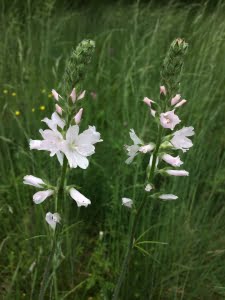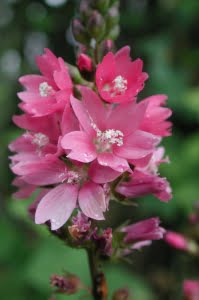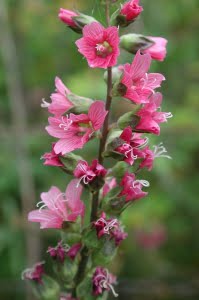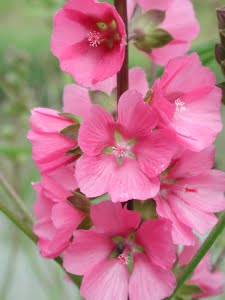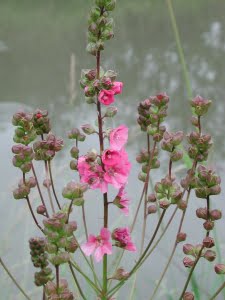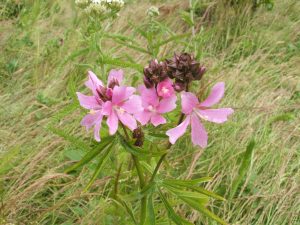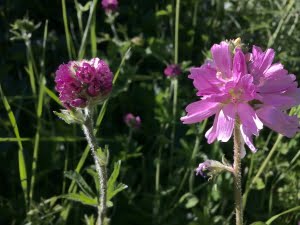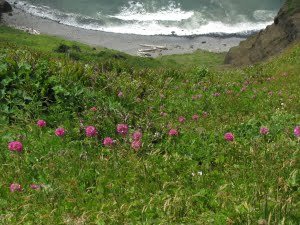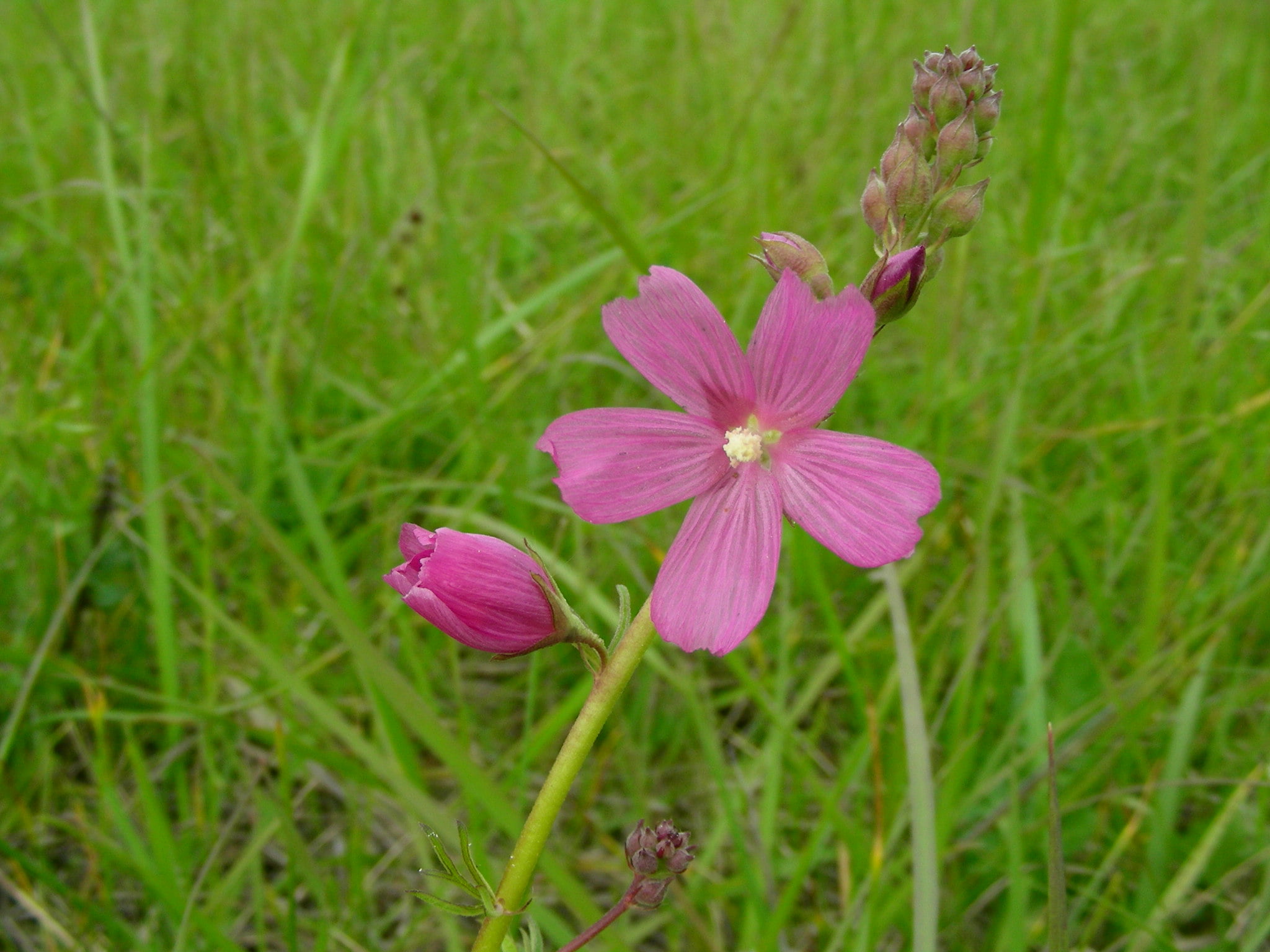
Natural history of checker-mallows of western Oregon
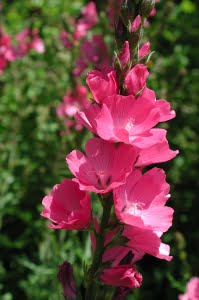 If you rode your horse or walked through western Oregon grasslands on a late May day 200 years ago, chances are you would have seen checker-mallows aplenty among the many wildflowers. Today these grasslands are few and far between, but in some habitat remnants checker-mallows still make a showy spring bloom. There are over 20 species of checker-mallows (the genus Sidalcea), all native to western North America. Several species of these conspicuous wildflowers occur in western Oregon, typically blooming from May through June.
If you rode your horse or walked through western Oregon grasslands on a late May day 200 years ago, chances are you would have seen checker-mallows aplenty among the many wildflowers. Today these grasslands are few and far between, but in some habitat remnants checker-mallows still make a showy spring bloom. There are over 20 species of checker-mallows (the genus Sidalcea), all native to western North America. Several species of these conspicuous wildflowers occur in western Oregon, typically blooming from May through June.
Flower sex
Sometimes called checkerblooms, most members of this genus have two sizes of flowers. Some plants have large flowers that are hermaphroditic, with both male and female flowers parts (stamens and pistils). Other plants have smaller flowers that lack functional pollen production and are thud female only. These two sexual forms create a mating system called gynodioecy, which promotes outbreeding and gene flow and healthy offspring.
Seed-eaters and evolution
Native weevils eat the developing seeds of many checker-mallows, consuming up to 90% of seeds produced at some sites and in some years. And in an interesting twist, seed-eating insects appear to prefer hermaphrodites over female checker-mallows, thus increasing the fitness of females, which may be one reason that gynodioecy is maintained in this genus (source).
Pollinators
Checker-mallows attract a variety of pollinators, including bumblebees, honey bees, and a wide variety of wasps, flies, beetles, and solitary bees, including the Sidalcea specialist, Diadasia nigrafrons (source). Hybridization between some checker-mallow species is possible and can occur in the wild, but it is infrequent and dampened by asynchrony of flowering and genetic reproductive barriers (source).
In the garden
Checker-mallows make rewarding garden plants because of their attractive flowers, long lived foliage, and easy maintenance. Their seeds typically require a combination of seed coat scratching (scarification) followed by wet-cold conditions (stratification) for at least a few weeks to break dormancy and promote germination (source) for cultivation in pots, but scattering seeds in the fall into a prepared bed usually results in ample seedlings the following spring.
Local diversity
Here are six checker-mallows one might see today in western Oregon. Enjoy!
Meadow checker-mallow (S. campestris)
Meadow checker-mallows tend to be relatively tall (3-6 feet) with stems that grow straight up from the ground and flowers that range from pale pink to nearly white. Field checker-mallows prefer relatively moist soils, occurring in wetlands to somewhat dry soils. The species occurs only in Oregon’s Willamette Valley.
Rose checker-mallow (S. virgata)
Rose checker-mallows have stems that curve up from the base to a height of 1-3 feet, with flowers that are deep rose to pale pink. They prefer dry soils. Sidalcea virgata occurs only in western Oregon, and it is sometimes considered a subspecies of the more widespread S. malviflora, which grows from California to Washington. This species may have one or two sets of chromosomes (diploid or tetraploid) (source), which may contribute to the variability in flower color and density of flowers on the stems.
Nelson’s checker-mallow (S. nelsoniana)
Nelson’s checkermallows are listed by the US Fish and Wildlife Service as Threatened. The flowering stems of this species grow straight up to 1-4 feet high. The flowers are deep rose pink to pale pink. Nelson’s checkermallow prefers wetland soils and occurs only in western Oregon and southwestern Washington. This species is the subject of intense efforts to establish new and large populations in the central and northern Willamette Valley in hopes that it can be removed from the Threatened species list (source).
Cusick’s checker-mallow (S. cusickii)
Cusick’s checker-mallow is very similar to Nelson’s checker-mallow but is typically somewhat more robust with deep pink flowers. The flowering stems often have multiple branches. It occurs in the Umpqua and Coquille valleys as well as south Willamette Valley and barely overlaps in range with Nelson’s checker-mallow between Eugene and Corvallis, Oregon.
Henderson’s checker-mallow (S. hendersonii)
Henderson’s checker-mallow occurs in saltmarshes and wetlands along the coast from southern Oregon to Vancouver Island. Populations of this species have declined in recent years resulting in some successful attempts to establish plants at additional sites in estuaries in Oregon (source 1, source 2).
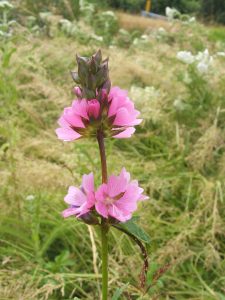
Hairy-stemmed checker-mallow (S. hirtipes)
Hairy-stemmed checker-mallow, as the name suggests, quite hairy with straight or forked hairs on the stems. It grows in grasslands and headlands (but never in tidal wetlands) from the central Oregon to central Washington coast. A good place to see this species in abundance is at Cascade Head in Lincoln County, Oregon.
Restoration
Research
Education
Get Involved
Contact
Main Office:
4950 SW Hout Street
Corvallis, OR 97333-9598
541-753-3099
[email protected]
Southwest Office:
1202 Parkway Dr. Suite B
Santa Fe, NM 87507
(505) 490-4910
[email protected]
© 2024 Institute for Applied Ecology | Privacy Policy

